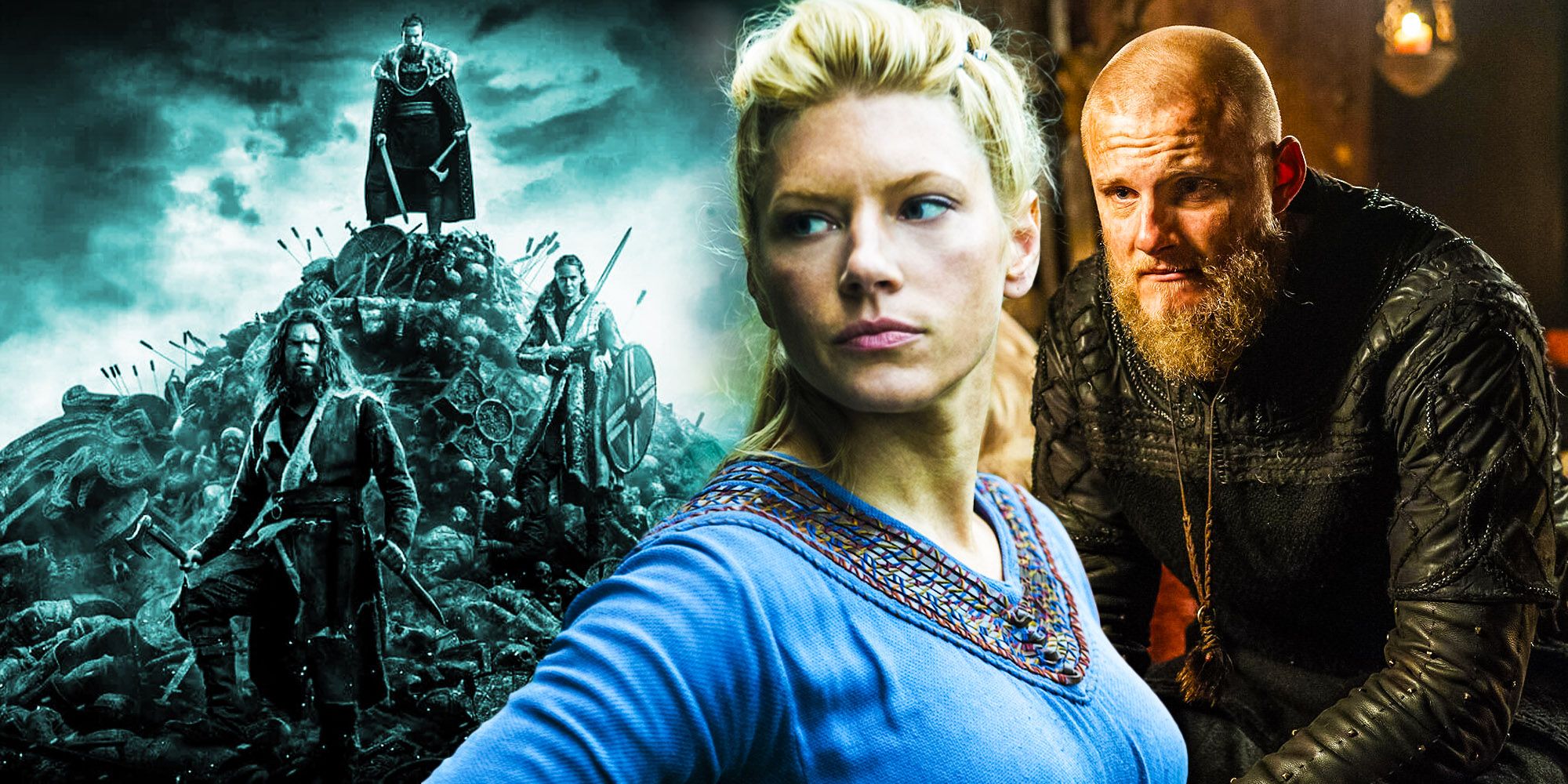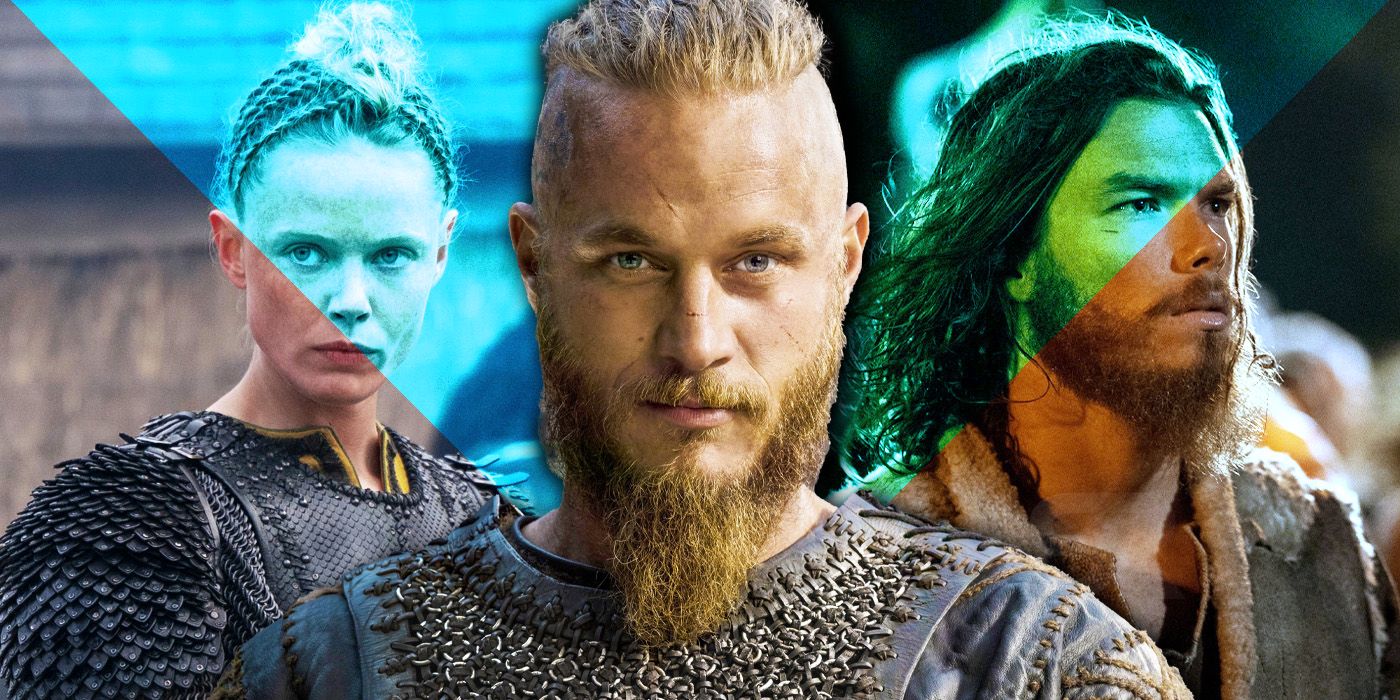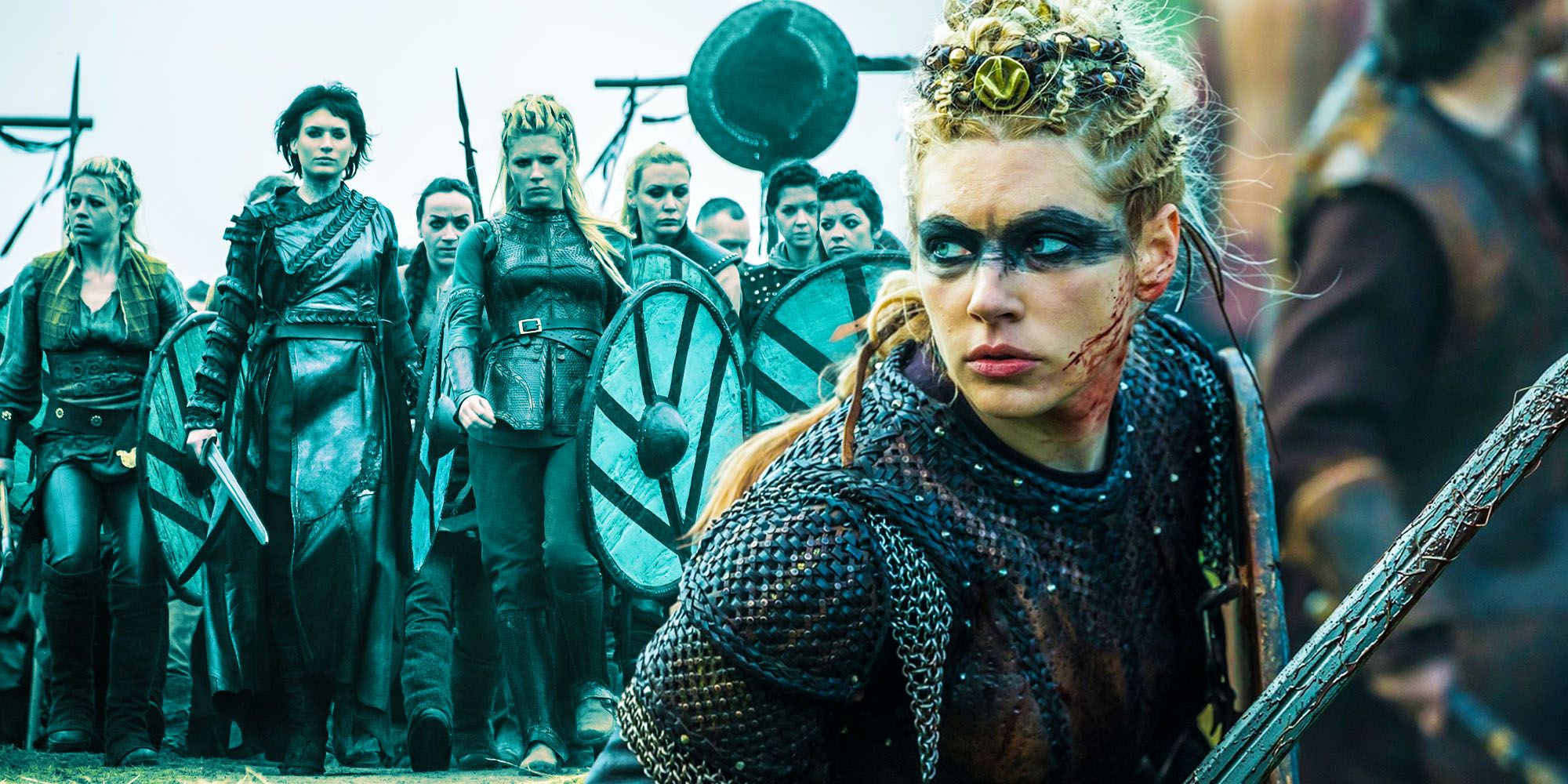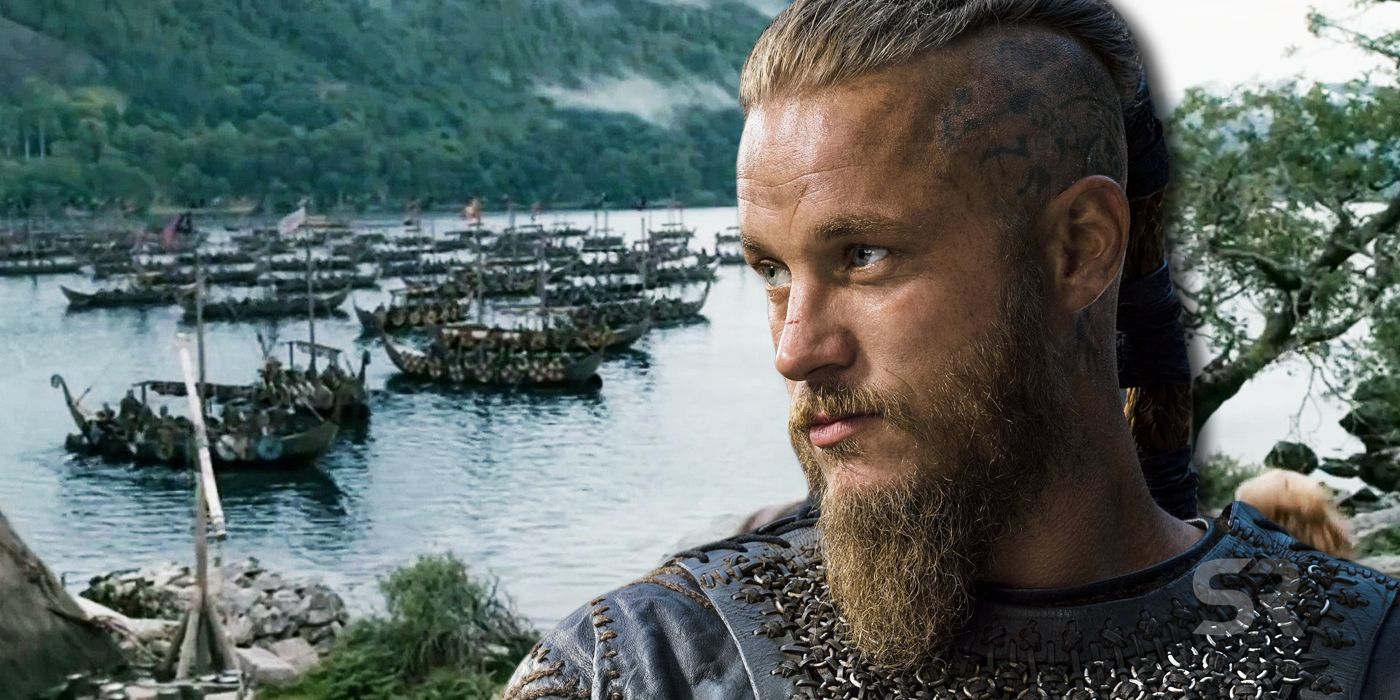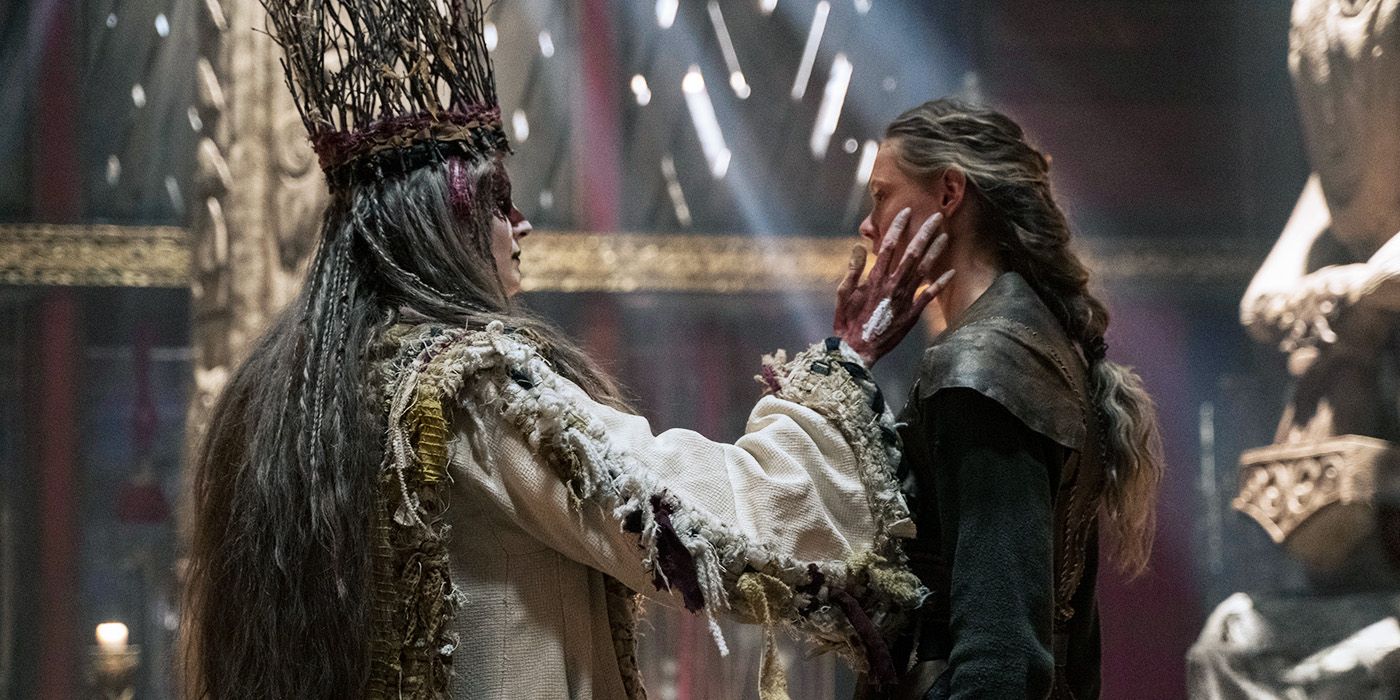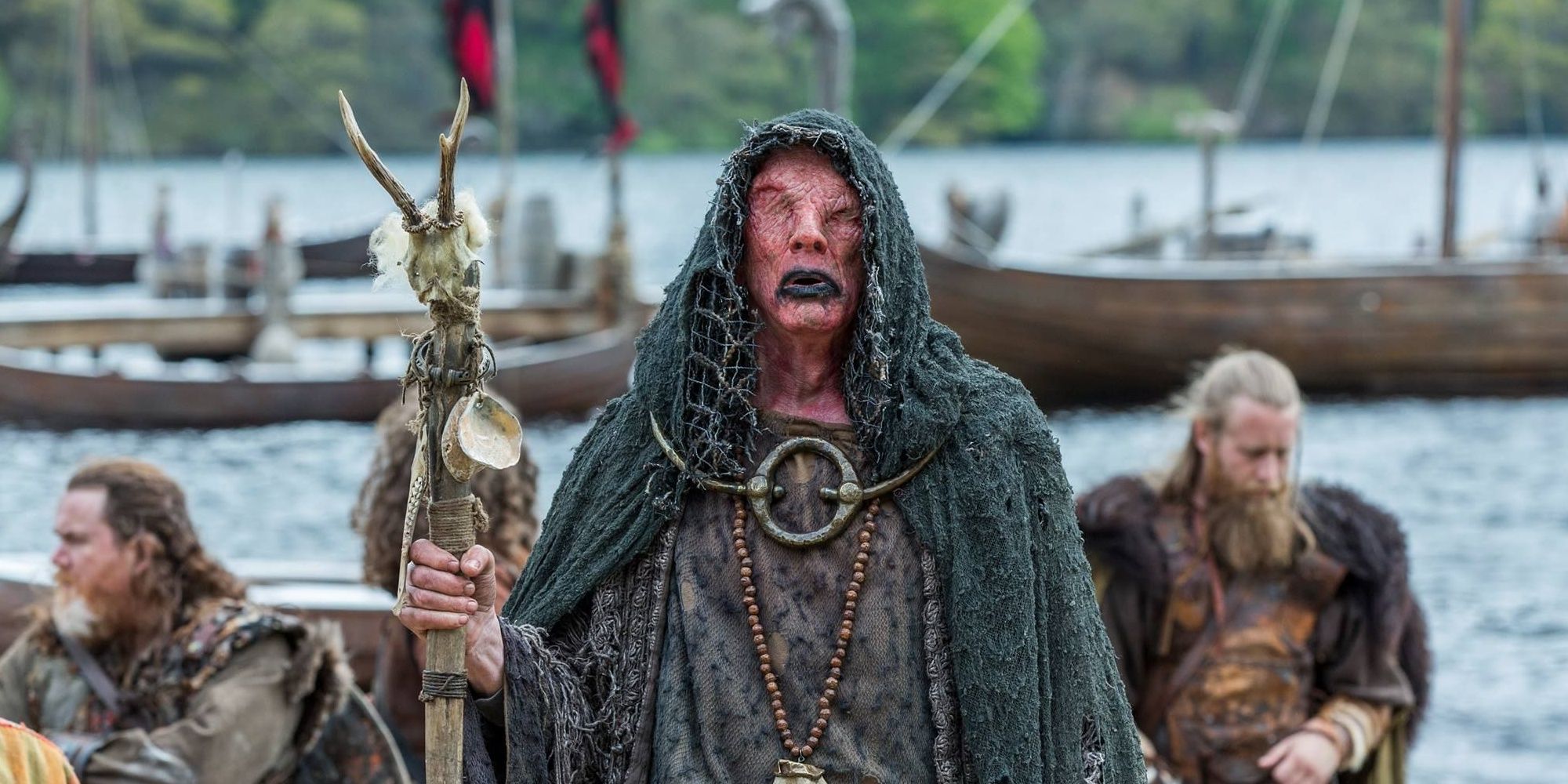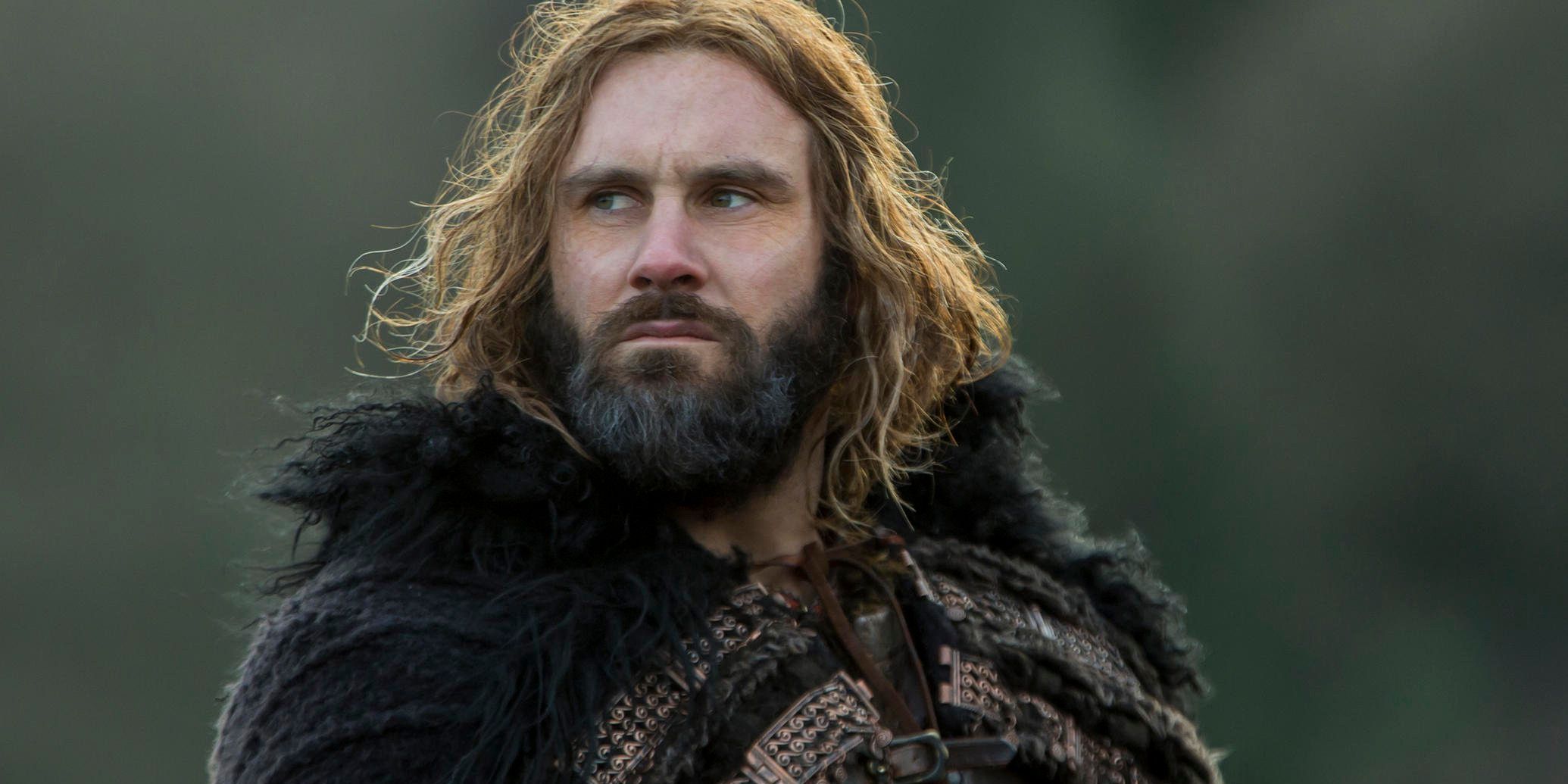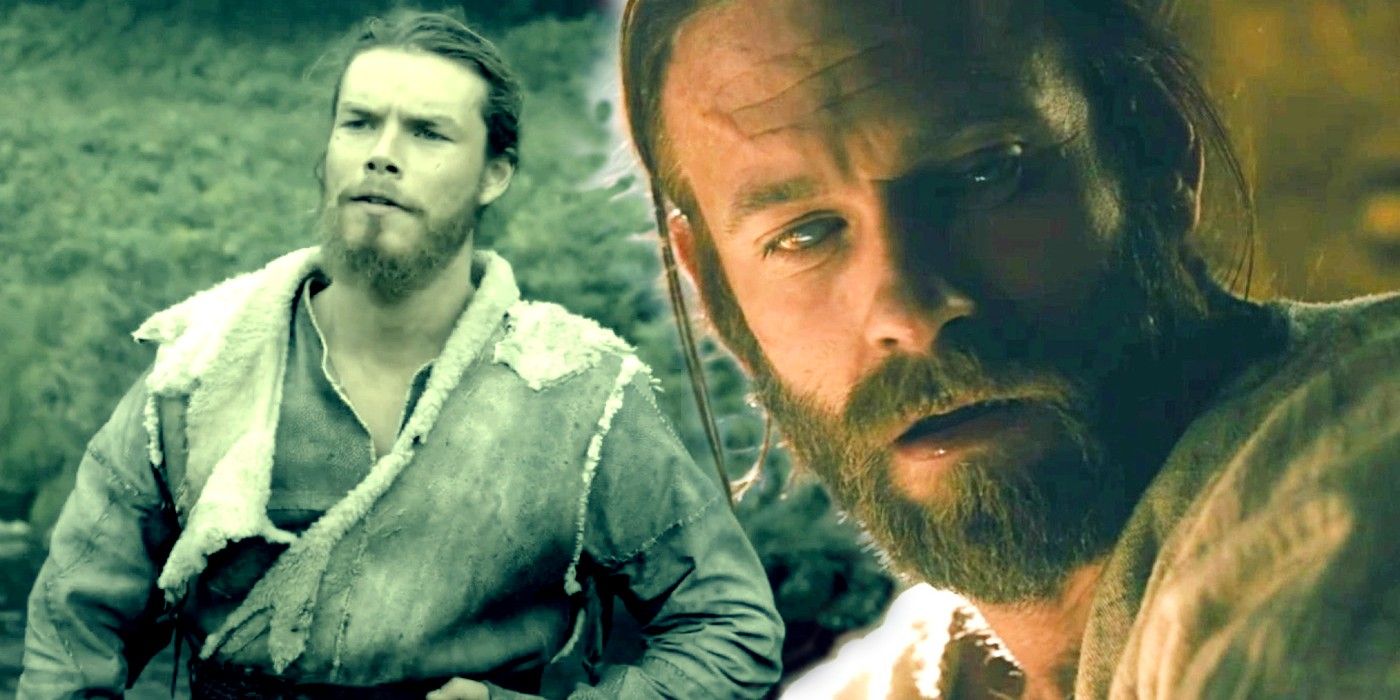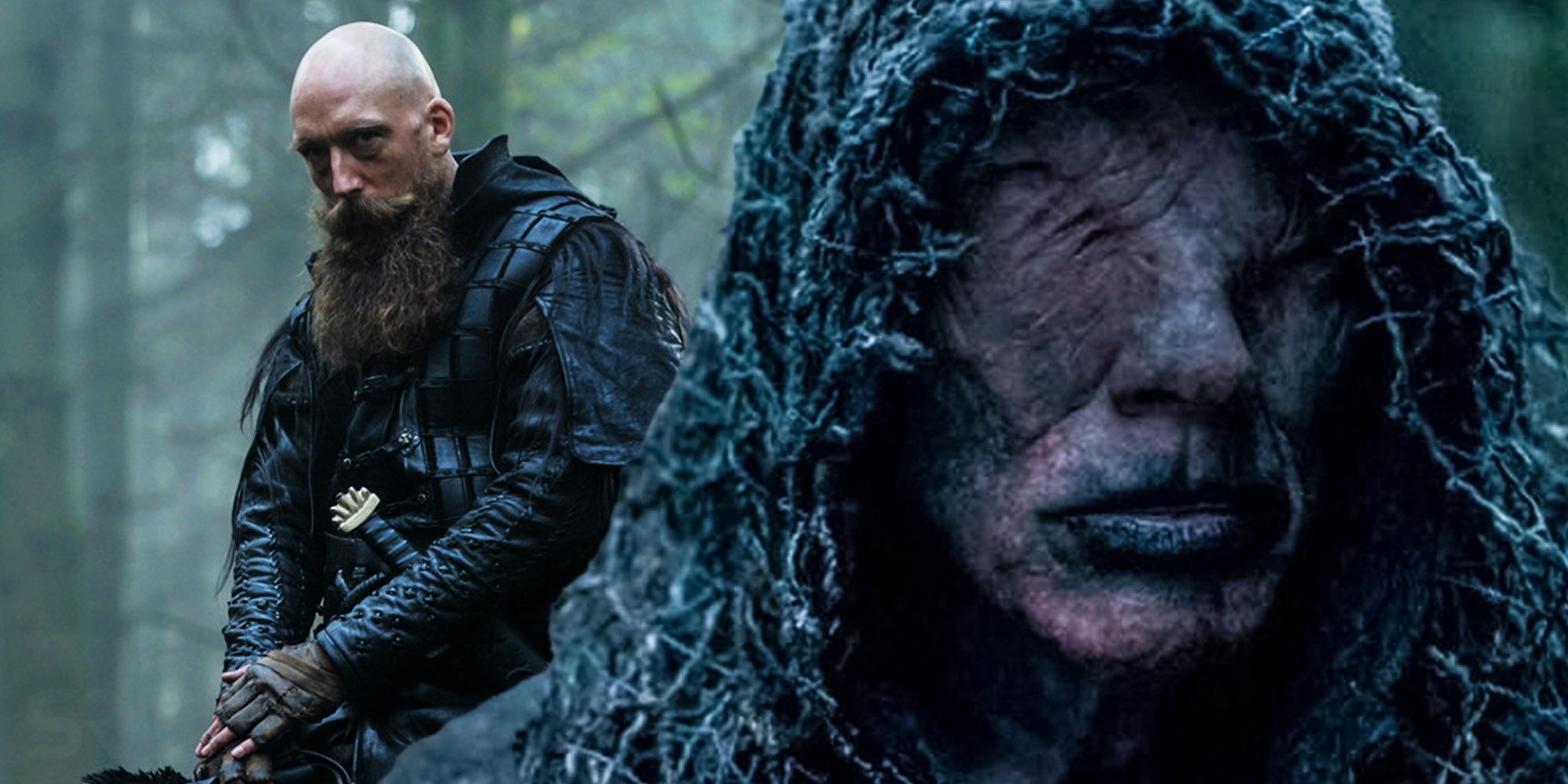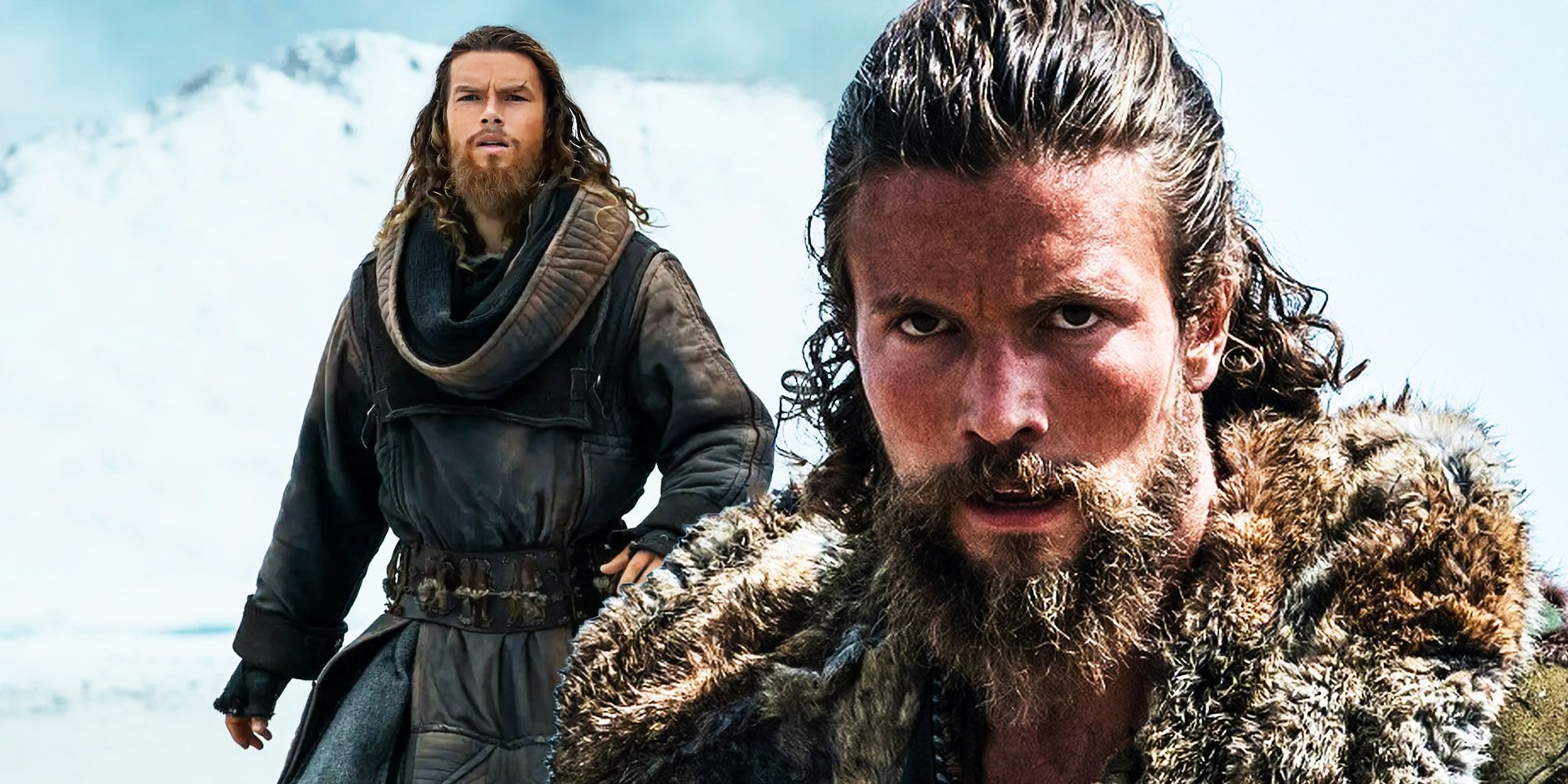Vikings: Valhalla is set many, many years after the events of Vikings and doesn’t feature any of the main characters of the original series, but there are tons of ways Vikings and Valhalla are connected – and here’s every one of them. Created by Michael Hirst and focusing on the Ragnar Lothbrok family tree, Vikings became one of the most popular historical dramas in recent years, airing from 2013 to 2020 for a total of six seasons. However, six seasons weren’t enough to tell the most exciting stories from the Viking Age and explore its most notable characters, so a sequel series was announced in 2019.
Titled Vikings: Valhalla, the series is set over a century after the events of Vikings, and as such, it follows a new generation of warriors and enemies. Major Vikings: Valhalla characters include Leif Erikson (Sam Corlett), Freydís Eiríksdóttir (Frida Gustavsson), and Harald Sigurdsson (Leo Suter) as they go on a journey that takes them across oceans and battlefields, with the conflict between Vikings and English royals – pagans versus Christians – as the backdrop. Although Vikings: Valhalla makes a big jump in terms of timeline after the ending of Vikings, it still included a bunch of references to the Vikings characters. Here are all the ways Vikings and Valhalla are connected.
Ragnar Lothbrok, Ivar the Boneless, & Björn Ironside
The Ragnar Lothbrok family tree headed up the cast Vikings characters during its first seasons, and his legacy is still felt in the universe of Vikings, along with those of his sons Björn Ironside (Alexander Ludwig) and Ivar the Boneless (Alex Høgh Andersen). Ragnar led the Lindisfarne raid, considered the beginning of the Viking Age, and his biggest plan was to sail to unexplored lands, something that his son Ubbe (Jordan Patrick Smith) achieved at the end of the series, and he was involved in various battles and raids that ultimately built his image of a legendary warrior.
Björn and Ivar are now remembered as fearless warriors whose battles continue to be a motivation to current Vikings, hence why they’re mentioned by the current characters – but also by their enemies, who use their names as an example of Vikings that were eventually defeated: Ragnar by King Ælle of Northumbria, Björn by Ivar, and Ivar by an English soldier. Ragnar Lothbrok is one of the many ways that Vikings and Valhalla connected, with his name and legacy living on far into the future.
Lagertha
Lagertha (Katheryn Winnick) is one of the ways Vikings and Valhalla are connected, as she's mentioned when talking about shieldmaidens. Lagertha was Ragnar’s first wife, part of the Ragnar Lothbrok family tree, mother of Gytha and Björn, and queen of Kattegat, as well as a well-known and fierce shieldmaiden. Lagertha fought many battles alongside Vikings and fellow shieldmaidens and was killed by Hvitserk (Marco Ilsø) who was hallucinating and mistook her for Ivar. Vikings: Valhalla proved that Lagertha’s legacy as a leader and shieldmaiden is still strong, with Freydís now taking over as the series’ shieldmaiden and following her steps.
Kattegat
Kattegat was the main setting for most of Vikings, and it continues to be a key place in Vikings: Valhalla, making Kattegat one of the ways Vikings and Valhalla are connected. In the universe of Vikings, Kattegat is located in southern Norway, bounded by the Jutlandic peninsula in the west, the Danish Straits islands of Denmark to the south, and the provinces of Västergötland, Scania, Halland, and Bohuslän in Sweden in the east.
Kattegat is important in Vikings as it's a center of commerce and a gathering place to plan and launch invading forces, as is done by Canute in Valhalla. Due to its location and importance in commerce and more, taking control of Kattegat grants a lot of power, hence why Olaf had to take over the city in order to further control Norway. By the end of Vikings: Valhalla season 1, Kattegat was taken by Vikings: Valhalla characters Olaf and his army, but Sweyn Forkbeard (Søren Pilmark), Canute’s father, arrived with the Danish fleet to show Olaf a lesson after he betrayed them.
Uppsala’s Temple
Jarl Haakon (Caroline Henderson) sent Freydís to Uppsala to learn about her destiny, and the latter was visibly excited when she arrived at the place – with good reason, as it’s in that city where a pagan temple is located in the universe of Vikings and one of the ways Vikings and Valhalla are connected. Fans of the main series instantly recognized the place, as Uppsala appeared in Vikings season 1 when Ragnar and company traveled there to worship the gods and offer a human sacrifice (who was none other than Athelstan, but he was saved as he was still a Christian). Unfortunately, the temple was destroyed by Christian berserker Jarl Kåre (Asbjørn Krogh Nissen), along with all the priests, priestesses, and visitors.
The Seer
As Vikings: Valhalla is set over 100 years after the events of Vikings, the surviving characters of the main series don’t appear as Vikings: Valhalla characters (not even in visions, at least not for now), but there’s one mysterious character who made a surprise appearance: the Seer (John Kavanagh), oracle of Kattegat. The Seer was one of the most respected people in Kattegat and its most mysterious resident, as everything about him was unknown, but he’s believed to have dwelled between life and death and to have lived for over a hundred years.
The Seer was killed by Ivar in Vikings season 5, but it was speculated that, because he straddled two worlds, he didn’t die. The Seer returned to Valhalla in a vision caused by a ritual performed on Freydís to learn about her destiny, and he later appeared to Jarl Kåre as well, so he will surely continue to share his wisdom in future seasons of the show. The elusive Seer is one of the ways that Vikings and Valhalla are connected, proving that even his powers can conquer death.
Rollo
Rollo’s (Clive Standen) story was left somewhat inconclusive out of the Vikings characters, as he didn’t return in season 6, but through a character in Vikings: Valhalla directly related to him, the sequel series can explore what was left of his story: Emma of Normandy. Emma of Normandy is one of the major ways that Vikings and Valhalla are connected, as she is a direct descendent of Rollo.
The queen of England was the daughter of Richard I, who was the son of William I Longsword, son of Rollo and Poppa of Bayeux, and one of only 2 direct descendants of a Vikings character in Vikings: Valhalla (along with Prince Harald Sigurdsson who is the great-grandson of King Harald Finehair). Emma even refers to her familial connection to the Vikings at some point, but her loyalty and focus are on England and how to expand her and Canute’s reign rather than on how to maintain a civilized relationship with the Vikings.
Erik The Red
One of the ways that Vikings connects to Valhalla, which is creating a lot of confusion among viewers, is Leif and Freydís’ father Erik the Red and the character of the same name in Vikings. The main series introduced Erik Thorvaldsson (played by Eric Johnson) in season 6 as an outlaw who saved Björn’s life when King Harald sent men to kill him, and he described himself as a former mercenary whose actions led him to become an outlaw.
After Björn’s death, Erik became king of Kattegat alongside queen Ingrid, who performed a ritual to turn him blind. Ingrid made a plan with a slave named Nissa to kill Erik, and so he was stabbed to death, with Ingrid taking the crown. However, given the time gap between Vikings' and Vikings: Valhalla's characters, it's unlikely that this Erik is the same as Leif and Freydís’ father, even if they have similar backstories, and it's also implied that their father is still alive.
How Valhalla's Vikings References Add To Its Meaning
Despite the two series being on completely different networks, there are many ways Vikings and Valhalla are connected — which adds considerable meaning to the spinoff series. First, it forges an ironclad connection between the two shows. It's true that Valhalla takes place long after the events of Vikings, but by keeping the references from its parent show fresh, it also keeps the events and specific plot points of the spinoff's source material at the forefront of the audience's minds. While this is the case, it's also true that viewers don't need to see Vikings to understand Valhalla, but it does transform the spin-off into a more enriching experience.
Secondly, the ways that Vikings and Valhalla are connected helps build the Vikings universe into a more tangible place. Though both series face historical inaccuracies, the stories are largely based on well-known Viking legends and events. The purpose of both shows is to bring these legends to life, and they do just that. This makes it necessary to provide a proper world/universe in which these legends exist. Keeping places like Kattegat and referencing characters like Ragnar only adds to the world-building aspects of Vikings and Valhalla, giving the newest batch of characters an already transcribed history to look back upon and from which they can source inspiration to make decisions.
Finally, keeping Vikings characters references in Valhalla is a more enriching experience for audiences. People are able to look back over the two series, and the ways Vikings and Valhalla are connected, and possibly make connections that haven't been seen or noticed before. Vikings: Valhalla is jam-packed full of Easter eggs and references to its parent series, breeding a sense of familiarity for those that have also seen Vikings. It creates a proper living and breathing history for the spinoff, adding even more weight to the new show.
Could There Be More Spin-Offs Connected To Vikings?
With all of the ways Vikings and Valhalla are connected, is it possible that more connections could be forged via another spinoff? As of now, there are currently no more Vikings spinoffs in development. However, that doesn't mean that couldn't change in the near future. Another spinoff would probably depend on the success of Valhalla, which has already been renewed for a third season. Both Vikings: Valhalla seasons 1 and 2 contained eight action-packed episodes chronicling the many feats of Leif Erikson, and it doesn't seem like the show is slowing down anytime soon.
Another factor that could influence further Vikings spinoffs is the amount of Viking history from which new stories can be pulled. All in all, there are plenty of Viking sagas that have yet to be explored on the big screen, such as Egil's Saga, Saga of Grettir the Strong, or the Greenland Saga. Other stories could be covered in a possible Vikings spinoff, such as that of the epic Beowulf. Beowulf has been told on the screen in the form of Robert Zemeckis' 2007 film starring Angelina Jolie, Ray Winstone, and Crispin Glover. Otherwise, Vikings: Valhalla is the only spinoff so far.

